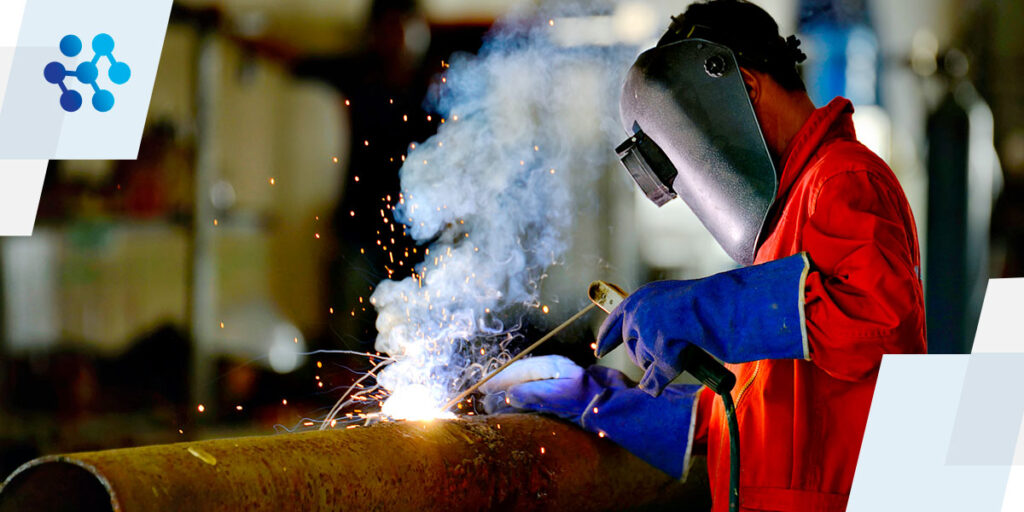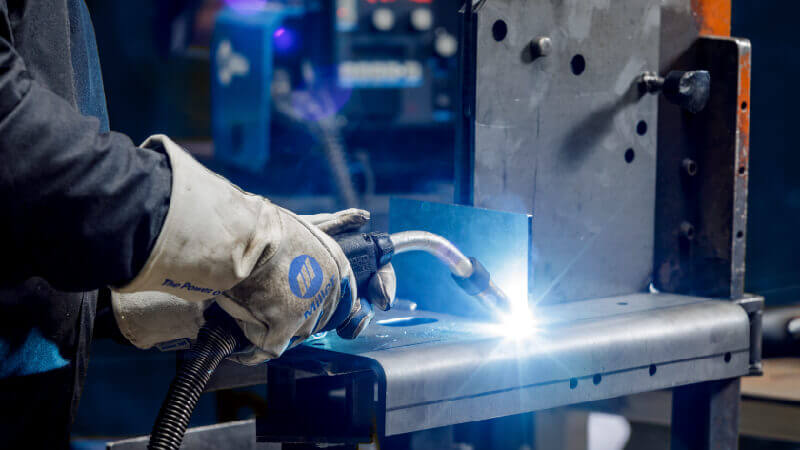Common Welding Repair Issues and Exactly How to Address Them Efficiently
Welding repair work frequently encounter a variety of issues that can threaten the stability of the end product. Usual troubles consist of insufficient penetration, porosity, and imbalance, amongst others. Each problem offers distinct difficulties that require specific techniques for resolution. Understanding these concerns is important for welders aiming to boost their abilities and outcomes. This discussion will certainly explore these usual welding repair concerns and effective techniques to resolve them.
Inadequate Infiltration
Inadequate infiltration occurs when the weld metal falls short to completely fuse with the base material, leading to weak joints and potential architectural failings. This concern frequently originates from not enough heat input, wrong electrode angle, or improper welding rate. Welders may experience inadequate penetration due to a mistake of the necessary specifications for a particular material density or kind. Furthermore, contamination on the base material's surface can impede effective bonding, intensifying the problem. To deal with inadequate penetration, welders need to assure ideal setups on their equipment and maintain a clean job surface. Routine assessment of welds is recommended to identify any deficiencies early, permitting timely adjustments and the prevention of compromised structural honesty in welded settings up.
Porosity
Porosity is an usual defect in bonded joints that manifests as tiny gas bubbles entraped within the weld metal. This issue can jeopardize the integrity of the weld, leading to minimized strength and prospective failing under anxiety. Fabrication. Porosity usually arises from contamination, dampness, or improper welding methods, which permit gases to leave into the liquified weld swimming pool. To attend to porosity, welders ought to guarantee appropriate surface preparation, maintain a tidy workplace, and make use of appropriate welding criteria. In addition, choosing the ideal filler product and shielding gas can reduce gas entrapment. Routine assessment and screening of welds can assist recognize porosity early, assuring prompt rehabilitative actions are taken, consequently maintaining the quality and reliability of the welded framework
Imbalance
Misalignment in welding can arise from various aspects, including inappropriate configuration and thermal growth. Comprehending the origin is important for effective resolution. Several improvement strategies are available to realign parts and guarantee structural honesty.
Root causes of Misalignment
Welding imbalance commonly stems from a variety of underlying concerns that can jeopardize architectural integrity. One primary reason is improper fit-up of components prior to welding, which can lead to gaps and irregular surfaces. Variants in thermal growth throughout the welding procedure can likewise lead to distortion, specifically if the products being signed up with have various coefficients of expansion. Additionally, inadequate fixturing and clamping may fall short to hold elements securely in position, bring about motion during welding. Poorly kept equipment, consisting of welding devices and devices, may present variances in the weld grain, further contributing to misalignment. Operator error, stemming from inadequate training or experience, can also play a substantial role in producing misaligned welds.

Correction Techniques Available
Dealing with imbalance efficiently requires a combination of corrective techniques tailored to the certain concerns at hand. One typical technique is using components or jigs to hold components in the appropriate position throughout welding, making sure regular positioning. In addition, preheating the products can help reduce distortion and improve fit-up. For substantial imbalance, mechanical adjustment techniques, such as utilizing hydraulic jacks or clamps, can be used to fix the placement prior to welding. Post-weld heat therapy may also be essential to alleviate tensions triggered by misalignment. Cautious evaluation and change during the setup phase can stop imbalance problems from coming to be significant troubles, promoting a smoother welding procedure and boosting total structural stability.
Distortion
Distortion is a common difficulty in welding that can occur from different aspects, including unequal cooling and heating. Comprehending the sources of distortion is necessary for applying effective prevention methods. Addressing this problem not just enhances architectural integrity but likewise enhances the overall high quality of the weld.
Reasons for Distortion
When subjected to the intense warm of welding, materials often undertake adjustments that can cause distortion. This sensation largely arises from thermal development and tightening during the welding process. As the weld location warms up, the material expands; upon air conditioning, it gets, which can create inner tensions. On top of that, unequal home heating throughout a work surface can worsen these stress and anxieties, causing warping or bending. The type of product also plays a considerable duty; steels with differing thermal conductivity and coefficients of development might respond differently, bring about unpredictable distortions. Furthermore, inadequate joint style and insufficient fixturing can add to misalignment during welding, boosting the possibility of distortion. Comprehending these causes is important for effective welding repair and prevention strategies.
Avoidance Techniques
Reliable prevention methods for distortion throughout welding concentrate on controlling warm input and guaranteeing proper joint layout. Preserving a constant heat input aids to decrease thermal growth and contraction, which can bring about distortion. Utilizing methods such as pre-heating the work surface can additionally minimize the temperature level gradient, promoting consistent home heating. Additionally, picking appropriate joint styles, such as T-joints or lap joints, can enhance security and reduce tension concentrations. Implementing correct fixturing to protect the work surfaces in location better help in keeping positioning throughout the welding process. Staggered welding sequences can disperse warm much more uniformly, protecting against local distortion. By applying these approaches, welders can greatly decrease the chance of distortion and improve the overall top quality of their welds.
Cracking
Splitting is an usual problem encountered in welding repair services, frequently browse around this web-site resulting from numerous variables such as inappropriate cooling prices, material selection, or poor joint prep work. The event of fractures can greatly endanger the integrity of the weld, bring about prospective failings throughout operation. To resolve this problem, welders have to first examine the origin causes, making sure that products work and appropriately chosen for the details application. Furthermore, managing the cooling price throughout the welding procedure is crucial; quick cooling can cause tension and cause breaking. Appropriate joint style and prep work additionally add to reducing the threat. Executing these approaches can improve weld high quality and toughness, inevitably reducing the probability of fracturing in finished weldments.

Insufficient Blend
A considerable issue in welding fixings is incomplete blend, which occurs when the weld metal does not adequately bond with the base material or previous weld passes - Montana Mobile Welding and Repair Belgrade. This issue can cause weak points in the joint, possibly endangering the honesty of the bonded framework. Elements contributing to insufficient combination include not enough heat input, inappropriate welding strategy, and contamination of the surfaces being joined. To resolve this issue effectively, welders should assure appropriate pre-weld cleaning and surface area prep work, as well as readjust their welding parameters to accomplish sufficient penetration and combination. Routine evaluation during the welding process can additionally aid recognize incomplete fusion early, enabling for prompt rehabilitative measures to improve the overall top quality of the weld
Overheating
While welding repairs can improve architectural honesty, overheating provides a considerable obstacle that can bring about product degradation. Extreme warm throughout welding can modify the mechanical homes of steels, resulting in decreased strength, increased brittleness, and bending. This phenomenon is particularly important in high-stress applications where structural integrity is extremely important. Identifying overheating can involve aesthetic evaluations for discoloration or distortion, in addition to checking temperature level during the welding process. To reduce the threats connected with getting too hot, welders must use suitable strategies, such as regulating warmth input, changing travel speed, and using ideal filler materials. Additionally, carrying out pre- and post-weld heat therapies can assist restore product residential properties and improve the general high quality of the repair work, making sure lasting performance and safety.
Regularly Asked Questions
What Are the Common Indications of a Welding Problem?

Exactly How Can I Check My Welds for High quality?
To test welds for quality, one can utilize visual examinations, ultrasonic screening, and radiographic approaches. Each strategy ensures structural integrity, determines problems, and confirms adherence to defined requirements, ultimately boosting the reliability of the bonded joints.
What Safety Safety Measures Should I Take While Welding?
When welding, one must focus on security by wearing suitable personal protective devices, making sure appropriate air flow, securing combustible products away, preserving a clean workspace, and knowing environments to avoid accidents and injuries.
Can I Fix a Weld Without Redesigning the Entire Joint?
Fixing a weld without remodeling the entire joint is possible, relying on the damage (Montana Mobile Welding and Repair Belgrade Welding). Methods such as grinding, including filler product, or making use of a welding process can effectively resolve specific flaws while protecting the bordering structure
What Devices Are Necessary for Efficient Welding Repairs?
Important devices for efficient welding fixings consist of visit the website a welding device, cable brush, grinder, protective gear, clamps, and filler products. Each device plays a vital role in making certain quality and security during the repair service procedure. Porosity typically emerges from contamination, dampness, or incorrect welding strategies, which permit gases to escape into the molten weld swimming pool. Poorly kept devices, consisting of welding machines and devices, might present incongruities in the weld grain, additional adding to imbalance. When subjected to the intense heat of welding, materials often undergo changes that can lead to distortion. Cracking is an usual problem come across in welding repair work, frequently resulting from various elements such as incorrect cooling rates, product selection, or insufficient joint preparation. A substantial issue in welding repair services is incomplete blend, which happens when the weld steel does not sufficiently bond with the base material or previous weld passes.